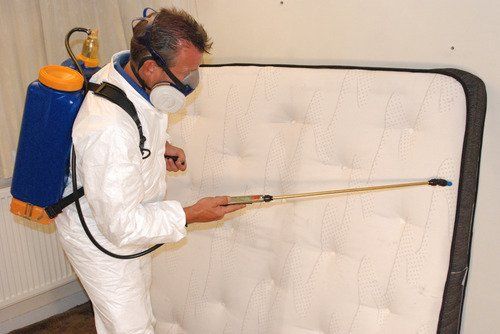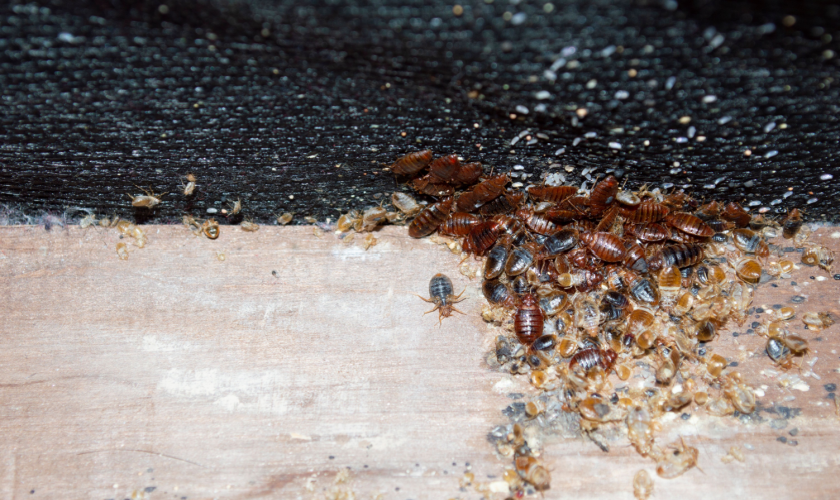How to Identify Bed Bug Bites and Prevent Future Infestations
How to Identify Bed Bug Bites and Prevent Future Infestations
Blog Article
Obtain Educated Regarding the Kinds Of Parasite Control Techniques and Their Advantages for Homeowners
Comprehending the numerous pest control methods available to property owners is necessary for efficient bug monitoring. Home owners who are knowledgeable can make calculated options that not only address bug issues however likewise boost the overall top quality of their living environment.
Chemical Insect Control Approaches
Chemical insect control methods are a vital element of integrated pest monitoring approaches for home owners looking for effective services to pest invasions. These techniques include the application of chemical materials developed to get rid of or hinder parasites that endanger personal residential or commercial property, health, and convenience. Typical chemicals utilized include pesticides, herbicides, fungicides, and rodenticides, each customized to target particular pests.
The key advantage of chemical parasite control is its quick performance; lots of formulations provide immediate results, reducing pest populaces dramatically in a short time. Additionally, developments in chemical formulas have actually led to items that are a lot more environmentally pleasant and have reduced poisoning degrees for non-target microorganisms when applied correctly.

Organic Pest Control Strategies
All-natural insect control approaches have obtained prominence as property owners seek more secure and more sustainable choices to conventional chemical techniques. Biological insect control strategies utilize natural predators, parasites, or pathogens to handle parasite populations successfully. This method is not just environmentally friendly yet also minimizes the threat of damage to non-target types, consisting of helpful insects and wild animals.
Among one of the most usual biological control methods includes introducing all-natural predators into the setting. For instance, ladybugs can be made use of to control aphid populaces, while nematodes target soil-dwelling pests like grubs. Furthermore, parasitoids-- microorganisms that reside on or within a host-- can be employed to control details bug species by laying eggs inside them, eventually leading to their death.
Another approach is using biopesticides, which are stemmed from all-natural products such as germs, plants, or minerals (bed bug exterminator). These items can properly target pests while posing minimal threat to people and animals. On the whole, biological bug control methods provide homeowners with an effective ways of insect monitoring that straightens with eco-friendly concepts, promoting a healthier living setting while reducing reliance on artificial chemicals
Mechanical Bug Control Methods
Mechanical bug control approaches incorporate a selection of methods that physically avoid or eliminate bugs without using chemicals. These strategies are specifically advantageous for property owners looking for eco-friendly choices while ensuring the safety of their home.
One common method is using barriers, such as catches, displays, and nets, which avoid parasites from going into homes or particular areas. Setting up home window displays can effectively keep pests out, while making use of physical obstacles around yards can deter bigger bugs like deer or bunnies. Additionally, mechanical catches developed for rodents can capture and get rid of these pests without the need for harmful compounds.
An additional effective strategy entails using brooms and vacuum cleaners to eliminate parasites straight from surface areas. Routine cleansing and maintenance can significantly reduce pest populaces by removing food sources and concealing spots. Employing tools like ultrasonic bug repellents can prevent different pests with sound waves that are unpleasant to them but inaudible to people.
Social Parasite Control Practices
Social bug control practices concentrate on modifying the atmosphere and administration techniques to create problems that are less helpful to pest invasions. These methods are basic in keeping a balanced community and lowering the dependence on chemical treatments. By altering agricultural techniques, home owners can successfully deter insects while promoting plant health.
One common method consists of plant rotation, which interrupts the life process of bugs by changing the types of plants grown in a certain location (bed bug exterminator). This not just lessens pest populaces yet additionally enhances soil health and wellness. Furthermore, intercropping-- growing diverse plants in closeness-- can perplex insects and reduce their ability to situate their preferred host plants
Water monitoring is another important aspect of cultural methods. Correct watering techniques can protect against standing water, which acts as a breeding place for insects and various other pests. In addition, keeping sanitation in and around the home, such as consistently getting rid of particles and food waste, can dramatically minimize insect tourist attraction.
Integrating these social practices into an extensive bug monitoring method allows homeowners to create a setting that naturally prevents insects, thereby improving the effectiveness of other control techniques while promoting lasting horticulture and landscape design.

Integrated Bug Management Approaches
Integrated Parasite Administration (IPM) flying termites stands for an alternative method that integrates different strategies to successfully manage parasite populations while decreasing environmental effect. This approach integrates organic, social, physical, and chemical techniques to attain sustainable insect control. By evaluating pest populaces and termite control cost their all-natural adversaries, IPM highlights tracking and determining pests before carrying out control procedures.
One of the core concepts of IPM is using thresholds, which develop the level of insect activity that necessitates intervention. This guarantees that treatments are applied only when essential, minimizing the dependence on chemical pesticides. Biological control methods, such as presenting natural killers or parasites, operate in conjunction with social techniques like plant turning and environment adjustment to interrupt pest life cycles.
In addition, IPM urges using least-toxic chemical choices when intervention is essential, prioritizing products that posture minimal danger to non-target microorganisms and the environment. For house owners, taking on IPM comes close to not just boosts the effectiveness of bug monitoring but also advertises a much healthier living setting, cultivating biodiversity and decreasing chemical exposure. Inevitably, IPM encourages house owners to make enlightened choices that stabilize bug control with ecological responsibility.
Conclusion
To conclude, understanding the numerous insect control techniques equips property owners to make enlightened decisions relating to pest administration. Each method-- chemical, biological, mechanical, social, and integrated parasite administration-- supplies distinct advantages that deal with various demands and choices. By selecting appropriate techniques, property owners can successfully take care of pest populations while minimizing health dangers and ecological effects. This informed method adds to a much healthier living environment, promoting general well-being for family members and pet dogs alike.
Comprehending the different insect control methods readily available to home owners is pest treatment vital for effective insect management.Chemical parasite control approaches are a critical part of integrated parasite monitoring methods for property owners seeking reliable services to pest problems. Overall, organic bug control methods give house owners with an effective methods of pest monitoring that lines up with environmental principles, advertising a much healthier living setting while lowering dependence on synthetic chemicals.
Cultural bug control techniques concentrate on modifying the environment and monitoring strategies to create conditions that are less favorable to pest infestations.In conclusion, understanding the various bug control techniques empowers property owners to make educated decisions pertaining to pest monitoring.
Report this page